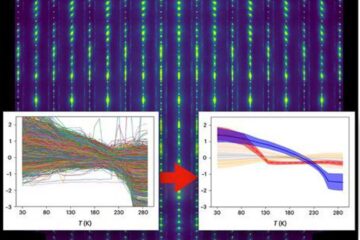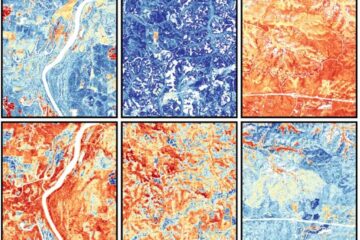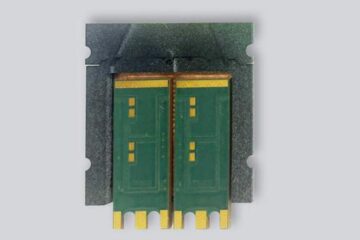Wetlands clean water and may control neighborhood flood problems

Constructed wetlands in planned communities can aid in surface water cleanup and flood prevention, according to Purdue University scientists who completed a five-year study on the management system.
The research, begun in 1998 on three constructed ponds, or wetland cells, on a newly renovated golf course on the university campus, showed that 11 of 17 measurable chemicals in surface water were reduced after running through the system, said Ron Turco, soil microbiologist and senior author of the report. Study results are published in the February issue of the journal Ecological Engineering. “Golf courses are a perfect place for constructed wetlands used as part of a water management system because wetlands can filter chemicals out of surface water, and they can also store excess water during storms,” Turco said.
In addition, constructed wetlands act as a holding area that can provide recycled water for irrigation, a system the scientists used on the golf course, he said. “Constructed wetlands on golf courses and in planned communities are a very good water management system,” Turco said. “When you build houses, roads and driveways, lots of hard surface is added, leaving no place for water to go. Building dikes and levees just moves the water problem somewhere else, causing flooding elsewhere.”
Because golf courses are mostly open surfaces, as opposed to all the hard surfaces in subdivisions and shopping malls, water can soak into the soil and flow into a constructed wetland, he said. As surface water flows from adjacent roads and parking lots onto a golf course and into the constructed wetlands, nutrients, suspended solids, organic metals, trace elements, pesticides and pathogens are removed or even eradicated. “Wetlands actually add a positive aspect to the water balance of a given region because they are basically infiltration sites,” Turco said.
The most vital function of constructed wetlands is preventing flooding and environmental contamination, he said. “Use of constructed wetlands can be significant in water management and water quality just by their use on the approximately 16,000 U.S. golf courses the National Golf Foundation lists,” Turco said. “In addition, many new home developments are planned around golf courses, and these developments need ways of containing, cleaning and directing water runoff, especially during storms.”
The wetlands also are of aesthetic value on golf courses and residential areas, and they create homes for wildlife and flora, he said. Using the recycled water for irrigation ensures that the wetlands remain wet and the recycled surface water is less expensive than pumping ground water.
The researchers evaluated a three-pond system on Purdue’s Pete Dye-designed Kampen Golf Course in order to study the quality of the water from when it entered the golf course until it exited into a holding pond or a recovering natural wetland, the Lilly Nature Center’s celery bog, in West Lafayette.
The almost 11,000 water plants placed in the ponds are responsible, along with microbes, for retaining or degrading the various chemicals associated with surrounding urban sprawl and the course itself. Some of the chemicals found in entering water included atrazine, chloride, nitrate, ammonia, nitrogen, organic carbon, phosphorus, aluminum, iron, potassium and manganese. In all, 83 chemicals were monitored, but only 17 were present in measurable amounts.
Four water quality monitors located along the wetland system checked for chemical levels. The first monitor was at the golf course’s east end where surface water enters the course. The fourth monitor was at the northwest end where water leaves the course and enters the celery bog.
The scientists also measured how much water entered and how fast it flowed through the system, and then compared data taken during both storm and non-storm days.
It’s important to design wetlands so they have enough capacity to handle the runoff in the particular water management area, Turco said. Water flow speed and the ponds’ depths must vary to ensure that the microbes remain active so they can degrade contaminants. Currently the scientists are planning new constructed wetlands studies in other venues.
The other researchers involved in this study were Eric A. Kohler and Zac Reicher both of the Department of Agronomy, and Vickie L. Poole, of the Department of Forestry and Natural Resources. Turco and Reicher also are members of the Purdue Turfgrass Program.
The United States Golf Association, Indiana Water Resources Research Center and U.S. Environmental Protection Agency Region 5 provided funding for this study. Golf course architect Dye was instrumental in designing Purdue’s Kampen course and securing support for the use of the wetlands. Spence Restoration Nursery provided the wetland plants and Heritage Environmental, Indianapolis, provided water sample analysis.
Writer: Susan A. Steeves, (765) 496-7481, ssteeves@purdue.edu
Source: Ron Turco, (765) 494-8077, rturco@purdue.edu
Ag Communications: (765) 494-2722; Beth Forbes, forbes@purdue.edu Agriculture News Page
Media Contact
More Information:
http://www.purdue.eduAll latest news from the category: Ecology, The Environment and Conservation
This complex theme deals primarily with interactions between organisms and the environmental factors that impact them, but to a greater extent between individual inanimate environmental factors.
innovations-report offers informative reports and articles on topics such as climate protection, landscape conservation, ecological systems, wildlife and nature parks and ecosystem efficiency and balance.
Newest articles

Machine learning algorithm reveals long-theorized glass phase in crystal
Scientists have found evidence of an elusive, glassy phase of matter that emerges when a crystal’s perfect internal pattern is disrupted. X-ray technology and machine learning converge to shed light…

Mapping plant functional diversity from space
HKU ecologists revolutionize ecosystem monitoring with novel field-satellite integration. An international team of researchers, led by Professor Jin WU from the School of Biological Sciences at The University of Hong…

Inverters with constant full load capability
…enable an increase in the performance of electric drives. Overheating components significantly limit the performance of drivetrains in electric vehicles. Inverters in particular are subject to a high thermal load,…





















